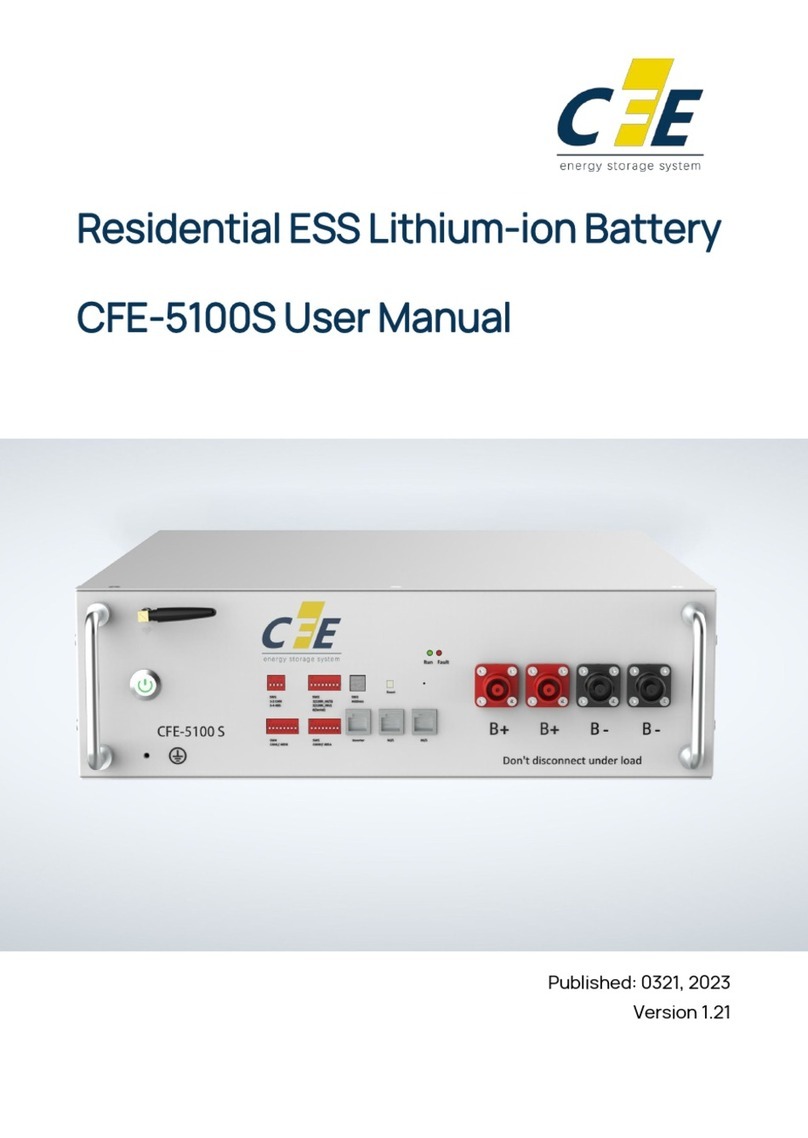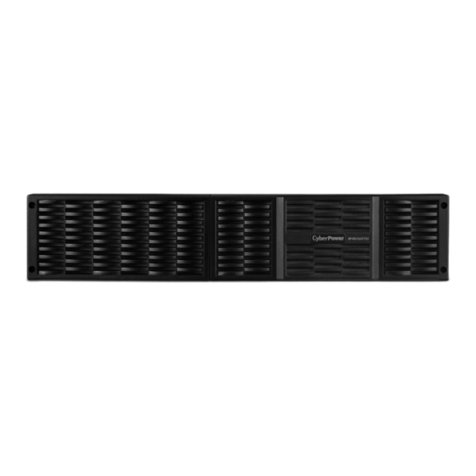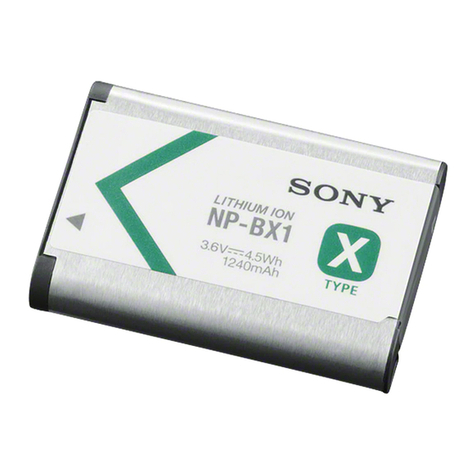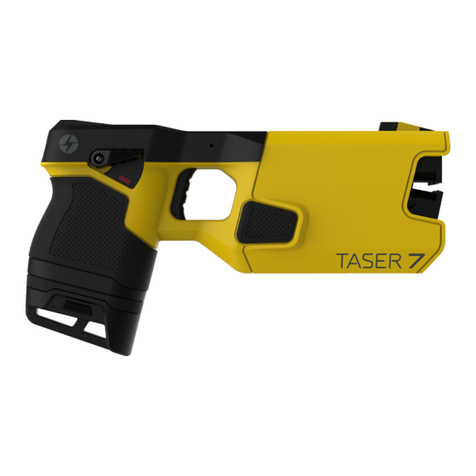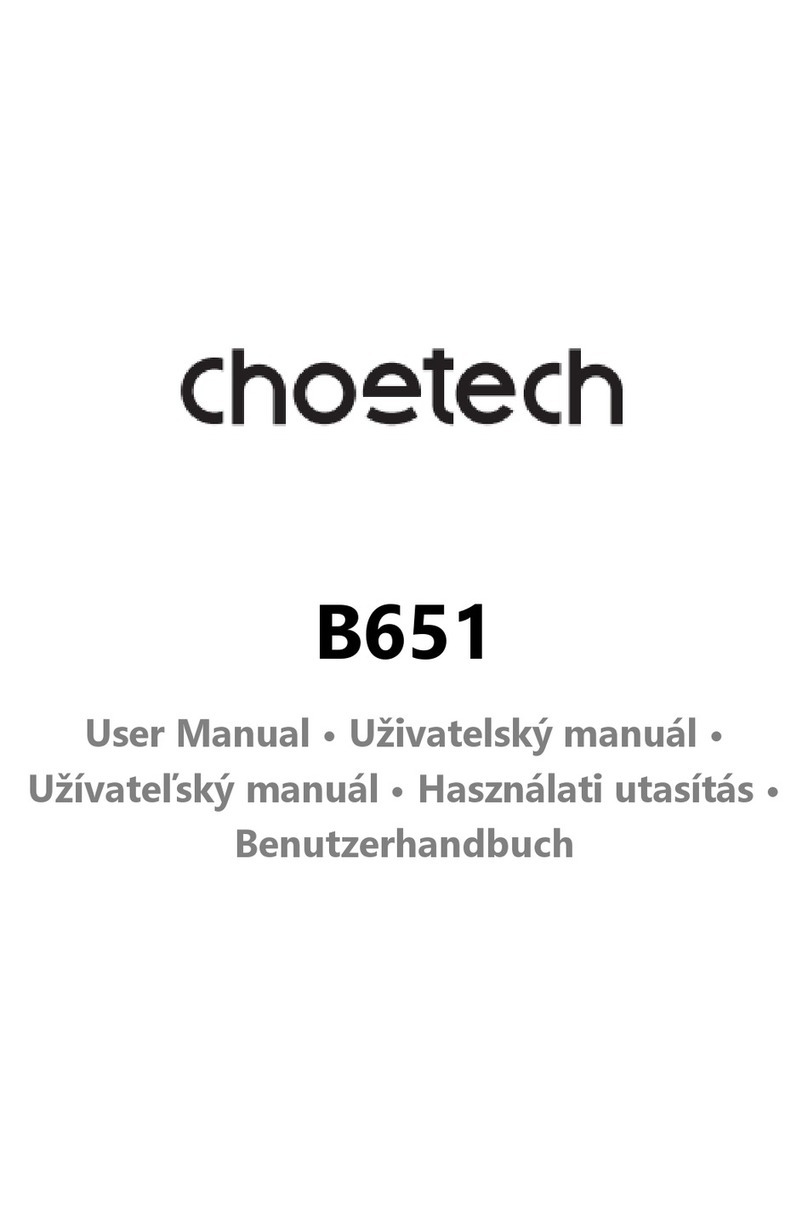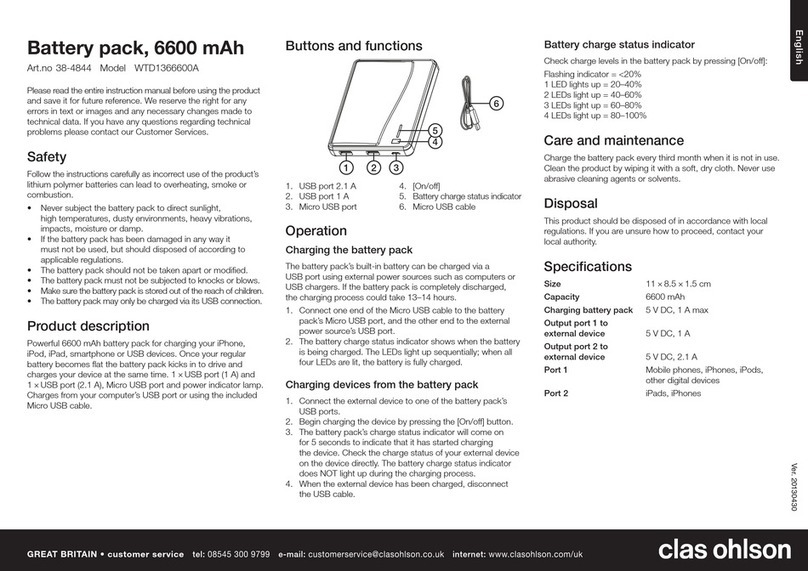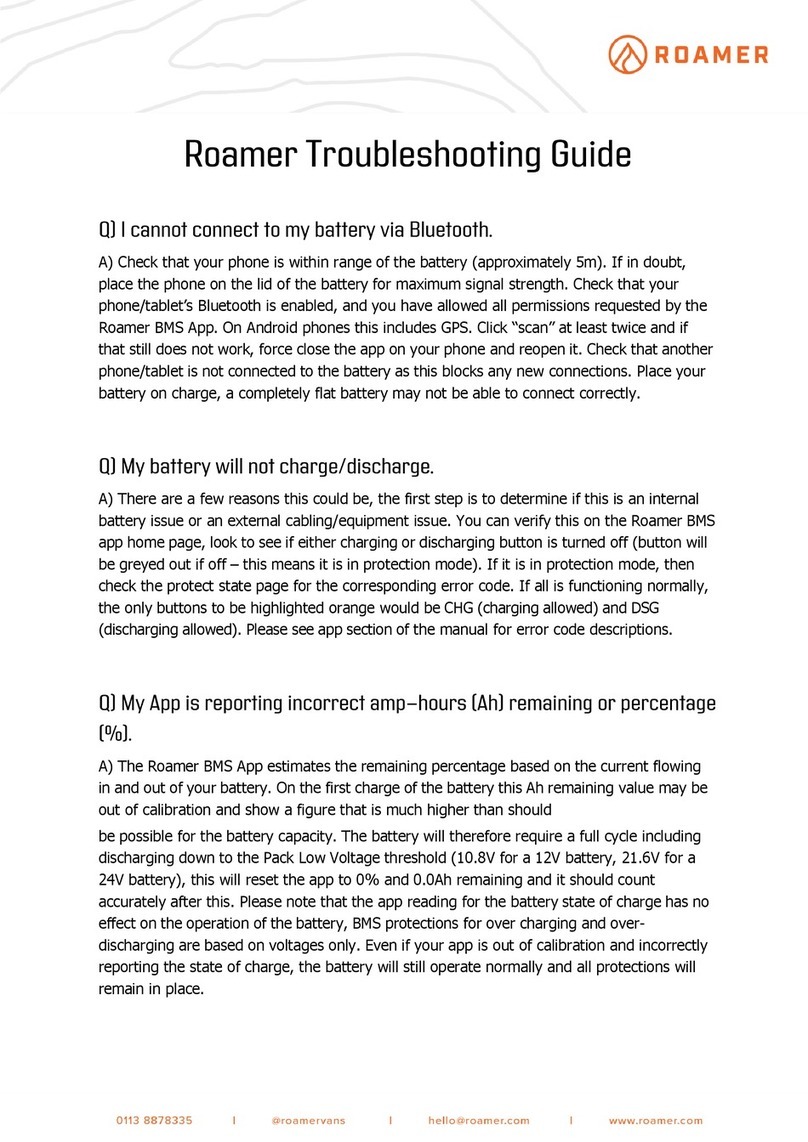ENIX ENERGIES MGL9050 User manual

Spec.No: MGL9050 Page 1of 11
DATE:
28/07/2020
Lithium Ion Battery Pack
Specification
MODEL MGL9050
Prepared By/Date Checked By/Date Approved By/Date
28/07/2020 28/07/2020 July 28th,2020
Customer Approval
Signature/Date
Company Name
Company Stamp

Spec.No: MGL9050 Page 2of 11
DATE:
28/07/2020
Amendment Records
Edition
Description
Prepared by
Approved by
Date
A
First Publish
28/07/2020

Spec.No: MGL9050 Page 3of 11
DATE:
28/07/2020
1 Scope
This specification is applied to the reference battery in this Specification
2 Product Specification
Table 1
No.
Item
General Parameter
Remark
1
Rated Capacity
Typical
700mAh
Standard discharge(0.2C)
after Standard charge
Minimum
670mAh
2
Nominal Voltage
3.7V
Mean Operation Voltage
3
Voltage at end of
Discharge
2.75V
Discharge Cut-off Voltage
4
Charging Voltage
4.2V
IEC standard
5
Internal Impedance
≤180mΩ
Internal resistance measured
at AC 1KHZ after 50% charge
The measure must uses the
new batteries that within one
week after shipment and
cycles less than 5 times
6
Standard charge
Constant Current 0.5C
Constant Voltage 4.2V
0.01C cut-off Charge time : Approx 4h
7
Standard discharge Constant current 0.2C
end voltage 2.75V

Spec.No: MGL9050 Page 4of 11
DATE:
28/07/2020
Continuous the table 1
No.
Item
General Parameter Remark
8
Maximum Continuous
Discharge Current
1A
Limited by PCB
9
Operation Temperature
Range
Charge : 0~45℃
60±25%R.H.
Bare Cell
Discharge : -10~60℃
10
Storage Temperature
Range
Less than 1 year: -20~25℃
60±25%R.H.
at the shipment state
less than 3 months:
-20~40℃
)
Less than 7 day : -20~65℃
11
Weight
Approx : 16g
FYI
12
Max. Pack Dimensions
Length 43.0mm
Width : 31.0mm
Thickness : 7.5mm

Spec.No: MGL9050 Page 5of 11
DATE:
28/07/2020
3 Performance And Test Conditions
3.1 Standard Test Conditions
Test should be conducted with new batteries within one week after shipment from our factory and the
cells shall not be cycled more than five times before the test. Unless otherwise specified, test and
measurement shall be done under temperature of 20±5℃ and relative humidity of 45~85%. If it is
judged that the test results are not affected by such conditions, the tests may be conducted at
temperature 15~30℃ and humidity 25~85%RH.
3.2 Measuring Instrument or Apparatus 3.2.1 Dimension
The dimension measurement shall be implemented by instruments with equal or more precision scale
of 0.01mm.
3.2.2 Voltmeter
Standard class specified in the national standard or more sensitive class having inner impedance
more than 10kΩ/V
3.2.3 Ammeter
Standard class specified in the national standard or more sensitive class. Total external resistance
including ammeter and wire is less than 0.01Ω.
3.2.4 Impedance Meter
Impedance shall be measured by a sinusoidal alternating current method (1kHz LCR meter).
(1kHz LCR)。 3.3 Standard Charge\Discharge
3.3.1 Standard Charge :Test procedure and its criteria are referred as follows:
0.5C=350mA
Charging shall consist of charging at a 0.5C constant current rate until the battery reaches 4.2V. The
battery shall then be charged at constant voltage of 4.2V while tapering the charge current.
Charging shall be terminated when the charging current has tapered to 0.01C. Charge time: Approx
4hrs, The battery shall demonstrate no permanent degradation when charged between 0 ºC and 45
ºC.
3.3.2 Standard Discharge
0.2C=140mA
The battery shall be discharged at a constant current of 0.2C to 2.75V @ 20º
5C0.2C 2.75V @ 20º 5C
3.3.3 If no otherwise specified, the rest time between Chare and Discharge amount to 30min.

Spec.No: MGL9050 Page 6of 11
DATE:
28/07/2020
3.4 Appearance
There shall be no such defect as flaw, crack, rust, leakage, which may adversely affect commercial
value of battery.
3.5 Initial Performance Test
Table 2
Item
Test Method and
Condition
Requirements
(1) Open-Circuit
Voltage
The open-circuit voltage shall be measured
within 24 hours after standard charge.
≥4.0V
(2) Internal impedance
Internal resistance measured at AC 1KHz after
50% charge.
≤180mΩ
(3) Minimal Rated
Capacity
The capacity on 0.2C discharge till the voltage
tapered to 2.75V shall be measured after rested
for 30min then finish standard charge.
Discharge Capacity
≥670mAh
3.6 Temperature Dependence of discharge capacity
Batteries shall be charged per 3.3.1 and discharged @0.2Cto 2.75V. Except to be discharged at
temperatures per Table 3. Batteries shall be stored for 3 hours at the test temperature prior to
discharging and then shall be discharged at the test temperature. The capacity of a cell at each
temperature shall be compared to the capacity achieved at 23 ºC and the percentage shall be
calculated. Each battery shall meet or exceed the requirements of Table 3.
Table 3
Discharge Temperature
-10℃
0℃
23℃
60℃
Discharge Capacity (0.2C)
40%
70%
100%
95%

Spec.No: MGL9050 Page 7of 11
DATE:
28/07/2020
3.7 Cycle Life and Leakage-Proof
Table 4
No.
Item
Criteria
Test Conditions
1
Cycle Life
Higher than 80% of the
Initial Capacities of the
Cells
Carry out 300 cycles
Charging/Discharging in the below
condition.
◆Charge: Charge at 0.5C/4.2V for about
4hrs
◆Discharge: 0.5C to 2.75 V
◆Rest Time between charge/discharge:
30min.
◆Temperature : 20±5℃300
◆ 0.5C/4.2V
◆0.5C 2.75V
◆30min.
◆20±5℃
2
Leakage-Proof
No leakage
(visual inspection)
After full charge with standard charge,
store at 60±3℃, 60±10%RH for 1 month.
4. Mechanical characteristics and Safety Test
Table 5
(Mechanical characteristics)
No.
Items
Test Method andCondition
Criteria
1
Vibration
Test
After standard charging, fixed the cell to vibration
table and subjected to vibration cycling that the
frequency is to be varied at the rate of 1Hz per
minute between 10Hz an 55Hz, the excursion of
the vibration is 1.6mm. The cell shall be vibrated
for 30 minutes per axis of XYZ axes.
No leakage
No fire
2
Drop Test
The battery is to be dropped from a height of 1
meter twice onto concrete ground.
No explosion,
No fire, no leakage.

Spec.No: MGL9050 Page 8of 11
DATE:
28/07/2020
Table 6
(Safety Test)
Item
Battery
Condition
Test Method
Requirements
Crush
Fresh,
Fully charged
Crush between two flat plates. Applied force is
about 13kN(1.72Mpa) for 30min. No explosion,
No fire
Short
Circuit
20℃)
Fresh,
Fully charged
Each test sample battery, in turn, is to be
short-circuited by connecting the (+) and (-)
terminals of the battery with a Cu wire having a
maximum resistance load of 0.1Ω.Tests are to
be conducted at room temperature (20±2℃ ).
No explosion,
No fire
The Temperature
of the surface of
the Cells are
lower than 150℃
Short
Circuit
60℃)
Fresh,
Fully charged
Each test sample battery, in turn, is to be
short-circuited by connecting the (+) and (-)
terminals of the battery with a Cu wire having a
maximum resistance load of 0.1Ω.Tests are to
be conducted at temperature(60±2℃ ).
No explosion,
No fire
The Temperature
of the surface of
the Cells are
lower than 150℃
Impact
Fresh,
Fully charged
A 56mm diameter bar is inlayed into the bottom
of a 10kg weight. And the weight is to be
dropped from a height of 1m onto a sample
battery and then the bar will be across the
center of the sample.
No explosion,
No fire
Forced
Discharge
Fully charged cell
Discharge at a current of 1C for 2.5hrs. No explosion,
No fire
Nail
Pricking
(3mm)
Fresh,
Fully charged
Prick through the sample battery with a nail
having a diameter of 3mm and remain 2h. No explosion,
No fire

Spec.No: MGL9050 Page 9of 11
VER:A
DATE:
28/07/2020
5. Protection circuit Parameters
Item
Symbol
Content
Criterion
Over charge Protection
VDET1
Over charge detection voltage
4.325±0.025V
tVDET1
Overcharge detection delay time
0.15~4.6S
VREL1
Over charge release voltage
4.075±0.025V
Over discharge
protection
VDET2
Over discharge detection voltage
2.5±0.05V
tVDET2
Over discharge detection delay time
36~290mS
VREL2
Over discharge release voltage
Need recharge to release
Overcurrent protection
VDET3
Over current detection voltage
0.15±0.015V
IDP
Over current detection current
2~4.5A
tVDET3
Detection delay time
4.5~18mS
Release condition
Cut load
Short protection
Detection condition Cut short circuit
TSHOR
T
Detection delay time
220~380μS
Release condition Cut short circuit
Interior resistance
RDS
Main loop electrify resistance
< 60mΩ
Current consumption
IDD
Current consume in normal operation
2μA Type 6μA Max

Spec.No: MGL9050 Page 10 of 11
DATE:
28/07/2020
6. CAUTIONS IN USE
To ensure proper use of the battery please read the manual carefully before using it.
. Handling
Do not expose to, dispose of the battery in fire.
Do not put the battery in a charger or equipment with wrong terminals connected.
Avoid shorting the battery
Avoid excessive physical shock or vibration.
Do not disassemble or deform the battery.
Do not immerse in water.
Do not use the battery mixed with other different make, type, or model batteries.
Keep out of the reach of children.
. Charge and discharge
Battery must be charged in appropriate charger only.
Never use a modified or damaged charger.
Do not leave battery in charger over 24 hours.
. Storage
Store the battery in a cool, dry and well-ventilated area.
. Disposal
Regulations vary for different countries. Dispose of in accordance with local regulations.
7 Battery operation instruction
7.1 Charging
Charging current:Cannot surpass the biggest charging current which in this specification book stipulated。
Charging voltage:Does not have to surpass the highest amount which in this specification book stipulated
to decide the voltage。
Charge temperature:The battery must carry on the charge in the ambient temperature scope which this
specification book stipulated。
Uses the constant electric current and the constant voltage way charge, the prohibition reverse charges. If
the battery positive electrode and the cathode meet instead, can damage the battery。

Spec.No: MGL9050 Page 11 of 11
DATE:
28/07/2020
7.2 Discharging current
The discharging current does not have to surpass this specification book stipulation the biggest discharging
current, the oversized electric current electric discharge can cause the battery capacity play to reduce and
to cause the battery heat。
7.3 Electric discharge temperature
The battery discharge must carry on in the ambient temperature scope which this specification book
stipulated.
7.4 Over-discharges
After the short time excessively discharges charges immediately cannot affect the use, but the long time
excessively discharges can cause the battery the performance, battery function losing. The battery
long-term has not used, has the possibility to be able to be at because of its automatic flashover
characteristic certain excessively discharges the condition, for prevented excessively discharges the
occurrence, the battery should maintain the certain electric quantity。
7.5 Storing the Batteries
The battery should store in the product specification book stipulation temperature range. If has surpasses
above for six months the long time storage, suggested you should carry on additional charge to the battery。
8. Period of Warranty
The period of warranty is a year from the date of shipment. We guarantees to give a replacement in case
of cells with defects proven due to manufacturing process instead of the customers abuse and misuse.
9. Other The Chemical Reaction
Because batteries utilize a chemical reaction, battery performance will deteriorate over time even if stored
for a long period of time without being used. In addition, if the various usage conditions such as charge,
discharge, ambient temperature, etc. are not maintained within the specified ranges the life expectancy of
the battery may be shortened or the device in which the battery is used may be damaged by electrolyte
leakage. If the batteries cannot maintain a charge for long periods of time, even when they are charged
correctly, this may indicate it is time to change the battery.
10. Note: Any other items which are not covered in this specification shall be agreed by both parties.
Table of contents
Popular Batteries Pack manuals by other brands
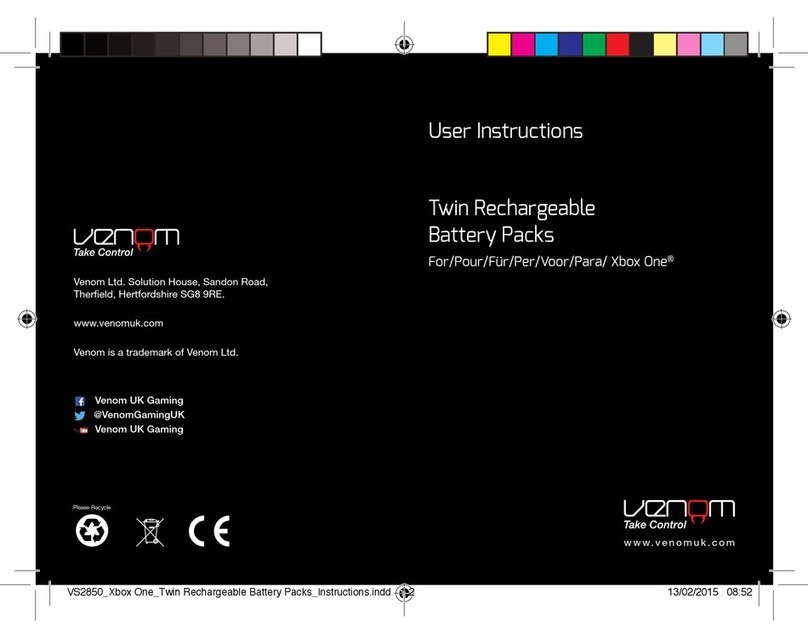
VENOM
VENOM VS2850 User instructions

EINHELL
EINHELL Power X-Change Plus Original operating instructions

Mophie
Mophie Powerstation AC user manual
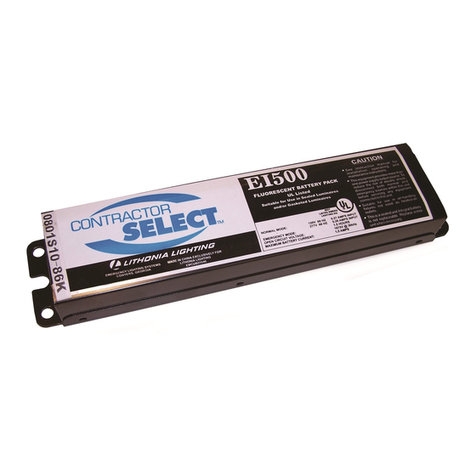
Lithonia Lighting
Lithonia Lighting EI500 installation instructions
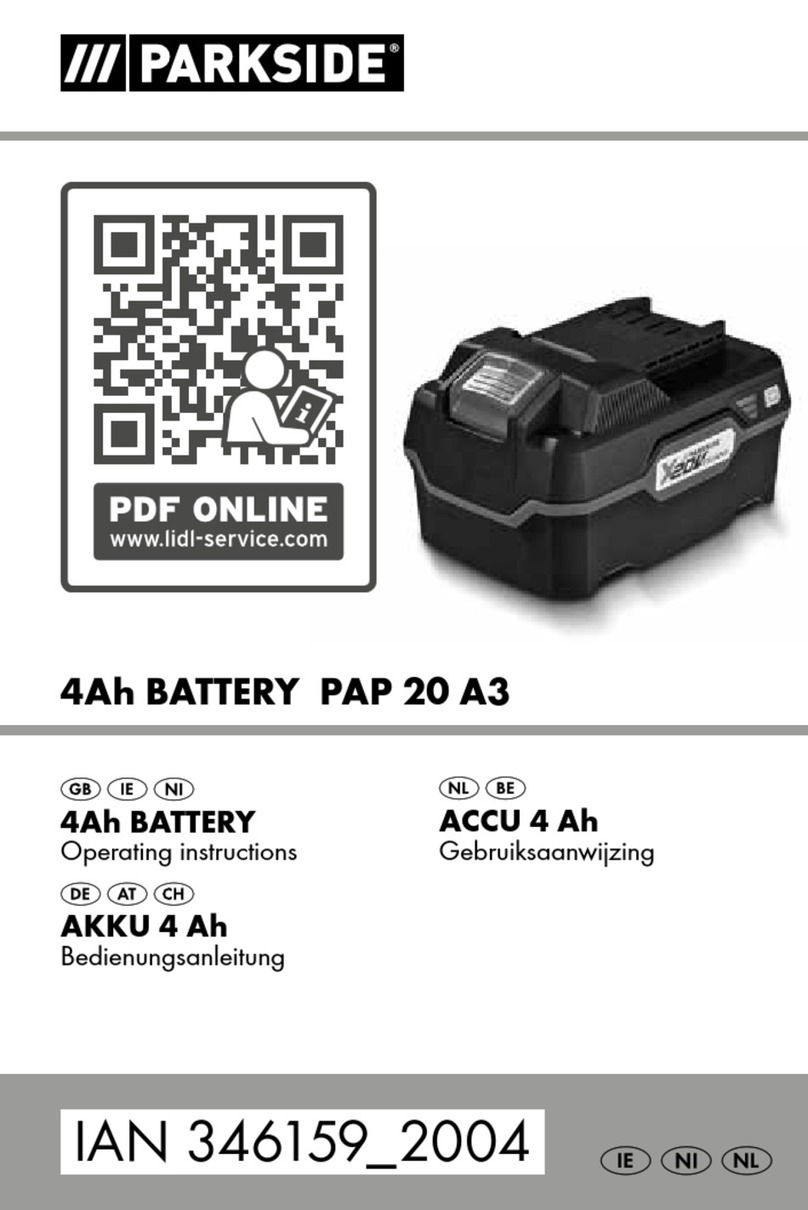
Parkside
Parkside PAP 20 A3 operating instructions
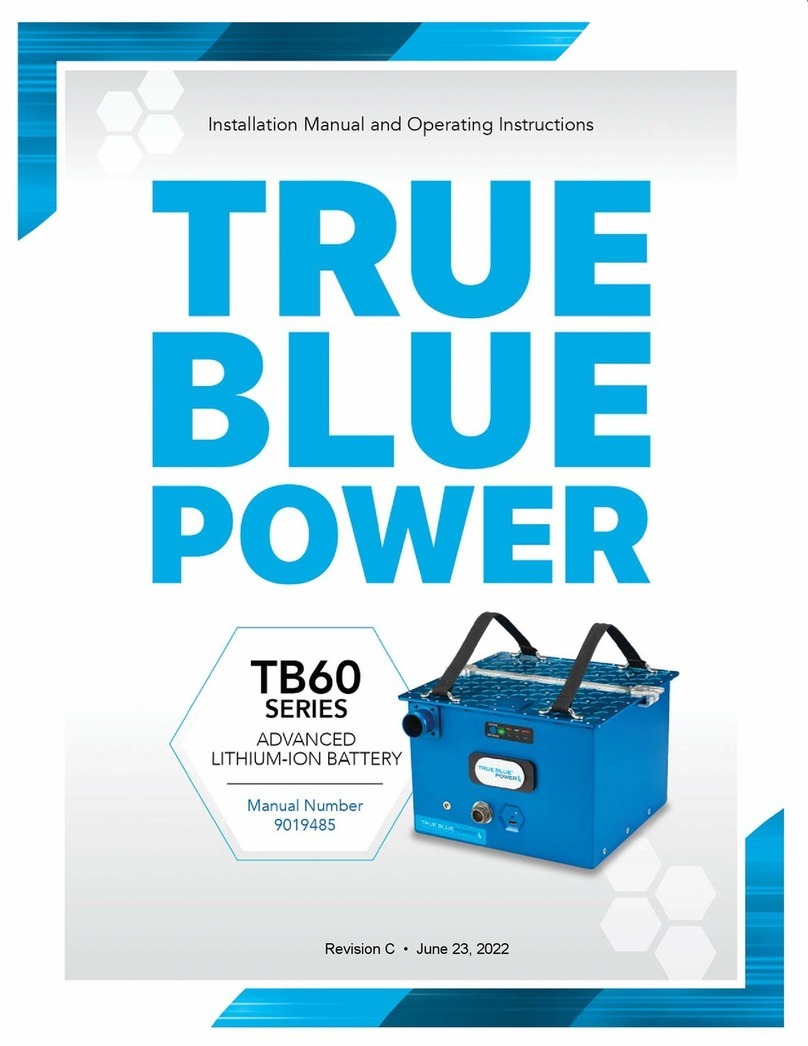
Mid-Continent Instrument
Mid-Continent Instrument True Blue Power TB60 Series Installation manual and operating instructions
